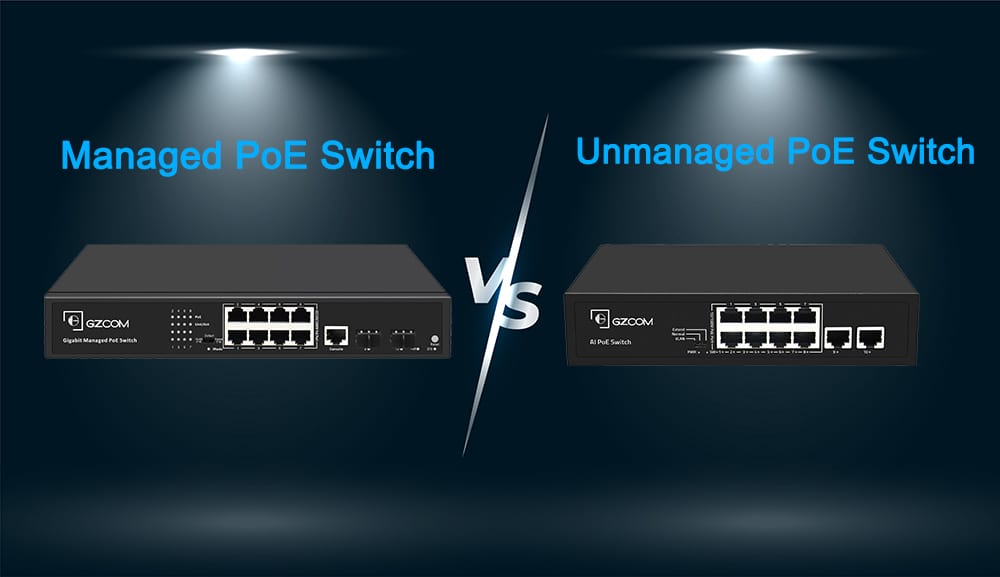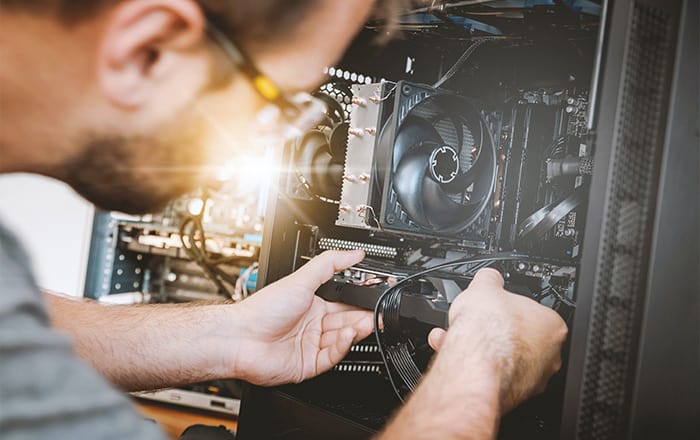Please submit your message online and we will contact you as soon as possible!
- Experience security and speed, without compromise.

2024-03-28

Power over Ethernet technology today is one of the most attractive features of the modern network infrastructures, watering in one stream the issues of the power management and connectivity within the network. For instance, with the data and power delivery conducted over one Ethernet cable only, PoE is able to make networks more convenient to operate and less intricate thus making it a real choice for different applications.
An PoE Switch, is an important part in networks that provides PoE integration so that the PoE can be utilized. It is a fundamental unit responsible for implementing the internet connectivity and electricity stimulation for multiple machines using the Ethernet cables. The fundamentals of PoE are tied to its ability transfers data as well as electricity as a kind of an Ifix that makes it unnecessary to use different power sources. This results not only in less clutter being produced,but also the encouraging the reduction of energy wastage through maximized power utilization across the network.

A Managed PoE Switch is a switch that offers more control, flexibility, and advanced features compared to other types of PoE Switches.
When it comes to Managed PoE Switch, the device is distinguished by the more elaborate functions and increased flexibility in network control. It shines in situations that require specific network administration details, especially suite of enterprise networks, data centers, and large-scale surveillance exist.
These switches stand out among the rest by means of advanced security features like VLANs, QoS, port mirroring, etc. Moreover, they have extra port security protections so-called as Enhanced port security.
This kind of individualization enables administrators to shape the system settings depending on certain specifications, assuring the network will work faster and safer. Such a customization allows for network administrators to set up the individual needs and to monitor the network to achieve an effective and safe communication system.
The two basic types of PoE Switches are Managed and Unmanaged PoE Switch. Their major difference centers on the options they provide in terms of control and customization. Unlike the managed switches which have wide range of configurable possibilities which are directed to specific networking purposes, unmanaged switches provide a fixed configuration without providing option for adjustment to the growing network demands over time.
Cost consideration factor also is affecting to a great extend in the decision making process. Feature-rich managed switches are more expensive to acquire, but the longer-term effects of the cost optimization, which may be seen as the performance improvement, by specifying parameters to your operational requirements, could be deemed as being one of the worthwhile investments.
In the course of determining whether an organization should go for a Managed or an Unmanaged PoE Switch, other considerations are characterized as well. These parameters affect the switch usability in a given system.

The density and variety of Your Network.The size and complexity of the network structures are a fundamental point for the process of selecting the perspective PoE Switch. In case of switches with large protrusions that cover a wide variety of device styles and complex traffic needs, Managed PoE Switch here offers the configurability and flexibility of a switch to fit exact organizational demands. In reverse, smaller networks which have limited connectivity needs may opt for unmanaged PoE Switch as a running power supply for their systems.
Forecasting for growth is a fundamental requirement while deciding a PoE Switch that considers comprehensive and long-term network expansion planning.
A Managed PoE Switch supports growing by letting administrators to modify settings even as the network system develops over the course of time and new devices get integrated with the existing functioning of the networks as the technologies advance.
In contrast, an Unmanaged PoE Switch may come along with the dismal drawback of scalability due to the fixed configuration system, which might at some point cause a transition to managed solutions as the network expands.

Technical Support Engineers are in a constant demand since the technology refresh is inevitable and only a few users know their way through issues.
Instances where the networks does not have dedicated IT people with technical expertise or a need to deal with complex configurations and ongoing management often make an informed decision to have an Unmanaged PoE Switch implemented in order to ease such concerns. However, a well-equipped IT may intend to put into use the intricate characteristics of the Managed PoE Switch with a view to have control over the working of the router security protocols.

Managed PoE Switch entail higher initial investments due to their advanced feature sets and scalability options. However, they often yield long-term benefits through optimized performance tailored to specific operational demands. Unmanaged PoE Switches present cost-effective solutions initially but may lead to limitations as network complexities grow over time.
Balancing budget constraints with functional necessities is critical in making an informed decision between managed and unmanaged PoE Switches. Evaluating the immediate networking needs alongside long-term objectives enables organizations to strike a balance between cost efficiency and essential functionalities.
The main aspects, managed and unmanaged PoE Power Switches major distinctions, consider well to make a decision that suits the case of network infrastructure are pivotal for the optimal performance and cost effectiveness.
Please submit your message online and we will contact you as soon as possible!